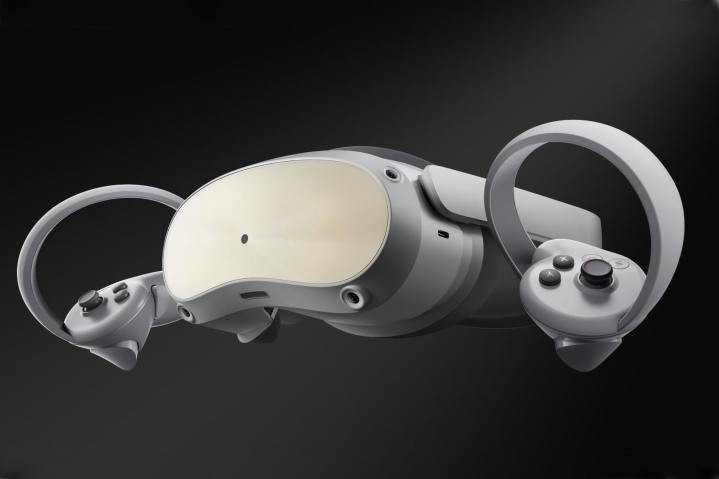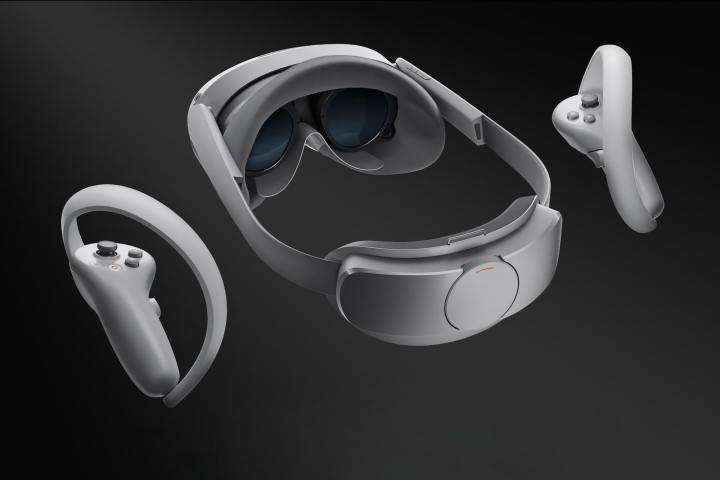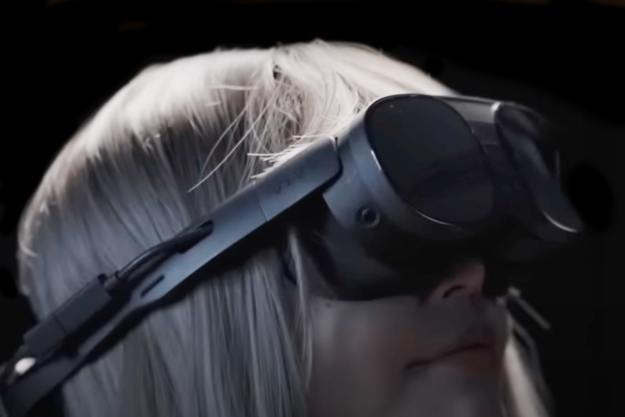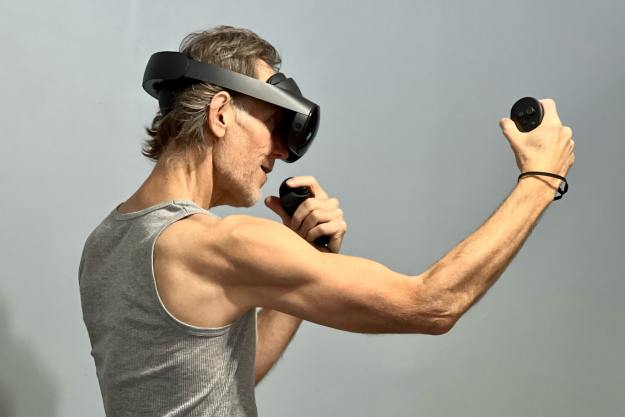The Pico 4 Enterprise is an enhanced version of the Pico 4 VR headset, providing a challenge to Meta’s work-focused Quest Pro, even surpassing it in terms of the screens’ resolution.
The Pico 4 Enterprise benefits from the same slim and balanced design as the Pico 4, both using pancake lenses in the front with a curved battery placed at the back. Meta’s Quest Pro also chose thin pancake lenses and a rear battery, cementing this as a new standard for future VR headsets.

The Pico 4 Enterprise boasts a 2160 x 2160 per eye resolution screen refreshes at 90Hz, and it has a nice 105-degree field of view. That means the Pico 4 Enterprise’s screen has more pixels than the Quest Pro. With VR headsets meant for the office, it can be difficult to confirm visual clarity based on these specifications, though, and hands-on reviews are needed to help with tough purchasing decisions.
Pico also added eye and face-tracking, along with a color passthrough camera. It remains to be seen whether the Pico 4 Enterprise or Meta Quest Pro has the better implementation of these features. Pico made it clear in a brief before the official announcement, however, that the Pico 4 Enterprise is not designed for mixed or augmented reality use — and that hand-tracking is not yet available.
Those features should be possible in the future, but this device is meant to be a VR headset for business use. That makes it distinct from the Quest Pro.
Pico won’t require developers to create new apps, since the Pico 4 Enterprise is compatible with any app or game that works with the Pico 3 and Pico 3 Pro.
Like the Quest Pro, battery life is expected to be about two hours, but the headset can be used while plugged in. The Pico 4 Enterprise is powered by the aging but surprisingly powerful Qualcomm Snapdragon XR2, the same chip used by the Pico 3 and 4, but should have slightly better performance than these consumer VR headsets since it comes with 8GB of faster LPDDR5 memory — an upgrade over the LPDDR4 RAM of the Pico 4.

While Meta is eager for businesses and individuals to order the Quest Pro, the Pico 4 Enterprise is specifically tailored for larger organizations. For example, Pico offers device management software to prepare numerous headsets for use by employees and can build custom app stores that include enterprise and other selected apps to create a business headset focused on work.
Preorders start on November 1, 2022, but US pricing and availability are uncertain at this time. The work-centric Pico 4 Enterprise will sell for 899 euros, which is equivalent to about $900 in US dollars at the current exchange rate. This isn’t quite as expensive as Meta’s $1,500 Quest Pro, but it helps establish that the advanced technology in professional VR headsets costs significantly more.
While Meta continues to dominate in North America, Pico is well-established as an enterprise VR supplier in Europe, the Middle East, and Asia, so that’s where the challenge could have an impact. More details can be found on Pico’s website.
Editors' Recommendations
- This new VR headset beats the Vision Pro in one key way and is half the price
- Your Quest 3 just got so much better — for free
- Apple shares new Vision Pro ad just days before launch
- Apple is about to begin mass shipments of Vision Pro, report says
- Apple Vision Pro launch nears as staff get special training




